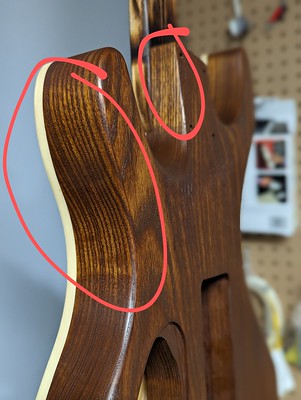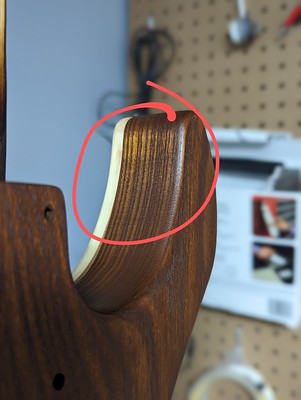I'm on my 4th coat of tinted Tung Oil finish (dark walnut color). I really dig the tone it gives to the roasted swamp ash. However, I have a hard time with the sides. The wood doesn't absorb evenly. I had 2 kit bodies finished previously and I struggled with those same areas.
Anyone has an idea how to fix this? If I had applied a really thin coat of shellac on the sides, would have this happened? Or just accept it and call it a day?
Anyone has an idea how to fix this? If I had applied a really thin coat of shellac on the sides, would have this happened? Or just accept it and call it a day?




